In 2024, the number of tourist trains reached a record high of 1,860
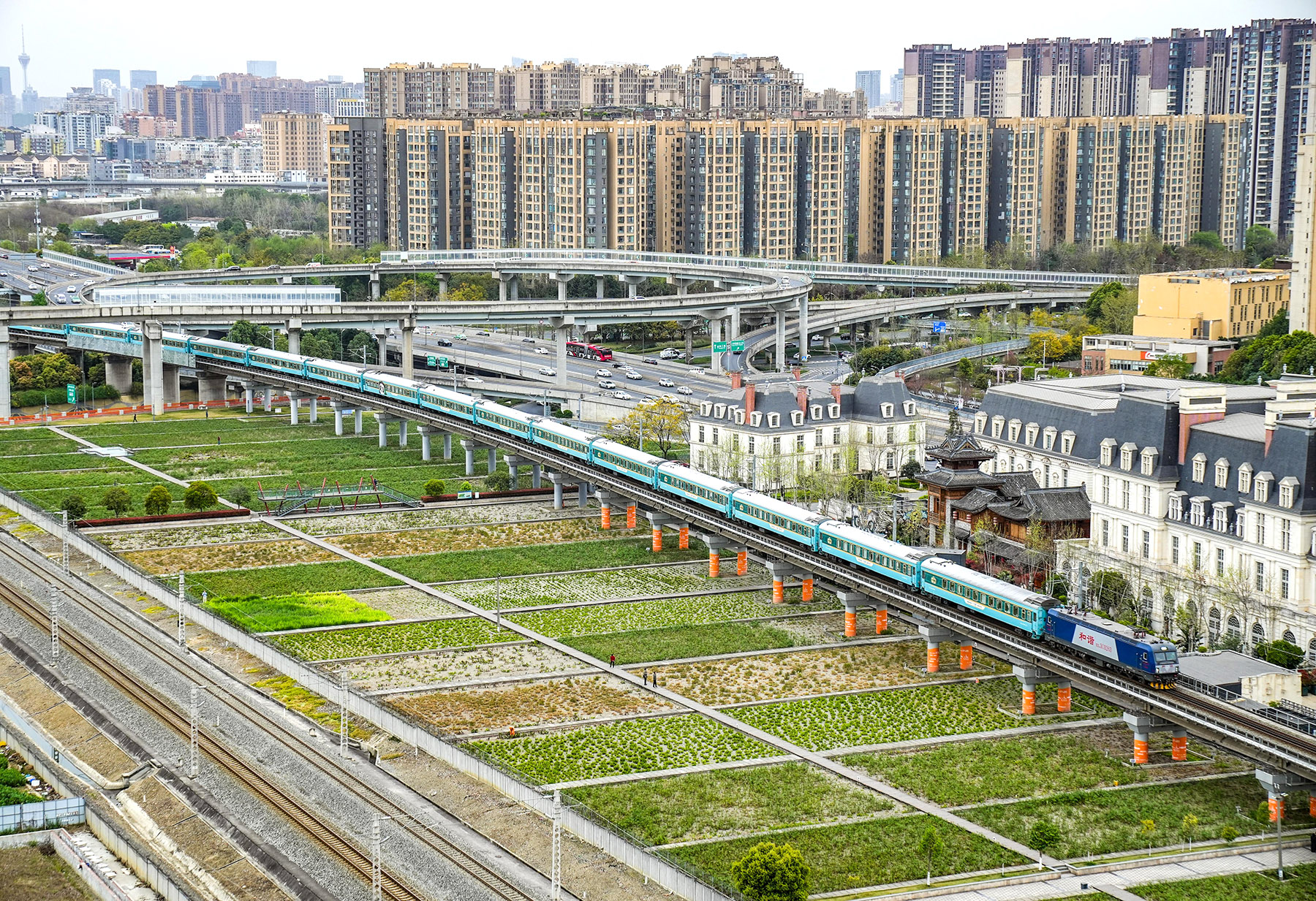
As soon as she boarded the tourism train in Nanchang, Jiangxi province, in mid-April, 62-year-old Que Chunying felt as if she had stepped back in time and returned to her youth.
"It's been such a long time since I've heard so many old songs from my era. I've met so many peers onboard. We can talk about our lives, sing familiar songs together and I've made a lot of new friends," Que said, describing the six-day journey as "a wonderful time".
She was particularly fond of the onboard cultural performances which featured traditional Chinese folk songs, dances and calligraphy demonstrations. "When the medley of classic songs started, everyone got so excited," Que recalled. "By the end, it turned into a group chorus-even the shyest passengers started to hum along."
READ MORE: Spring in bloom, tourism on the rise
Que is among a growing number of seniors who enjoy taking "silver-haired" trains, where scenes like hers are becoming increasingly common.
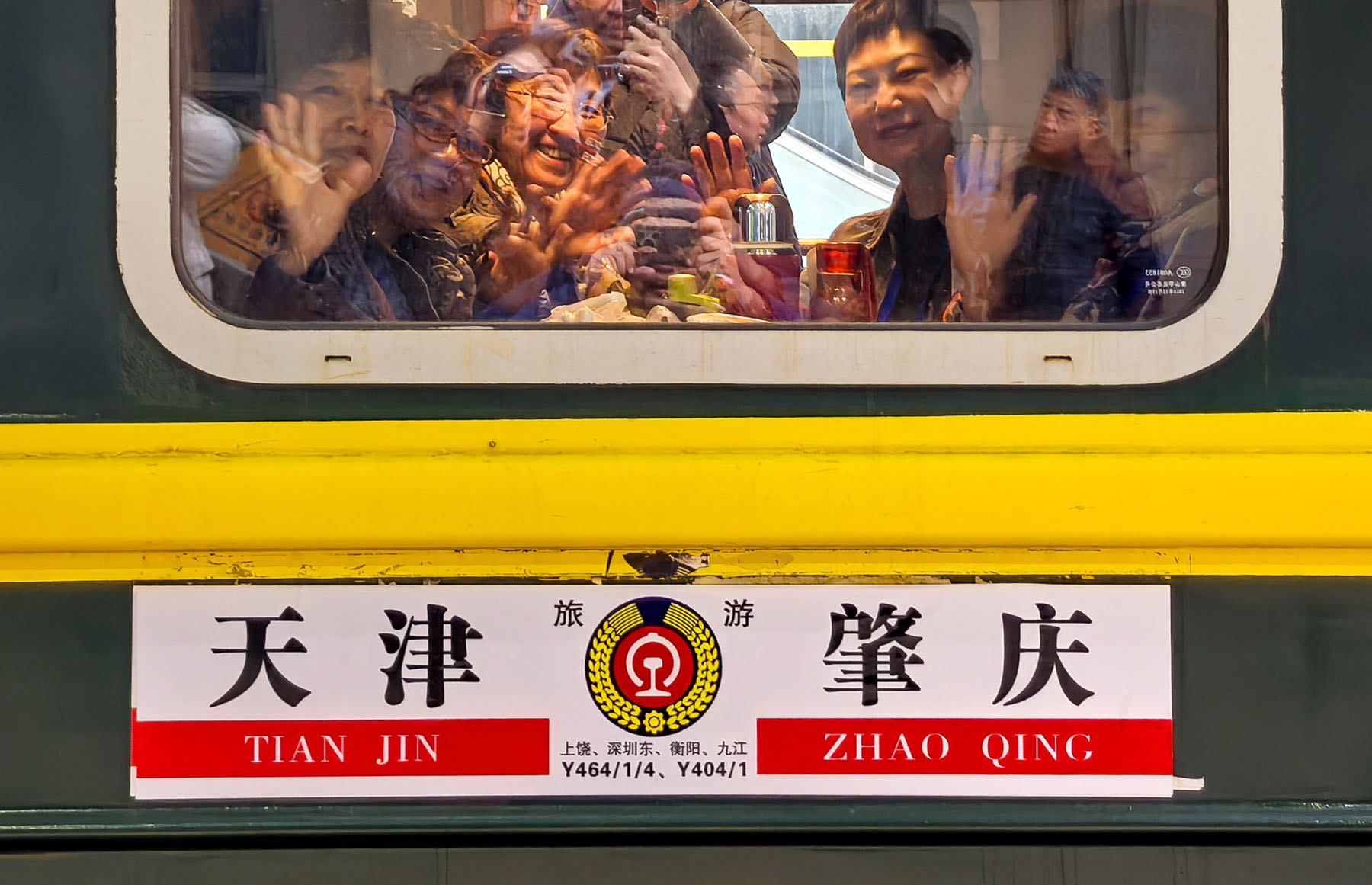
'Silver-haired' trains
Designed for comfort, convenience and culture, these tourism trains cater specifically to elderly travelers. Known for their slower pace and curated routes, they are part of a growing trend among China's aging population.
The "silver-haired" tourism trains, linking multiple scenic sites along the route, are usually regular speed trains. They have gained tremendous popularity among seniors, thanks to features such as a relaxed travel pace, multiple scenic stops, safety, convenience and affordability.
Each train journey typically spans several days and includes stops at major tourist destinations. For example, the Beijing to Xinjiang route passes through Ningxia Hui autonomous region and Gansu province, connecting scenic spots such as Zhongwei, Zhangye, Jiayuguan and Turpan. The trains stop at those railway stations along the route.
Upon arrival at each station, buses are ready to take passengers directly to the tourist sites. Meals are arranged at local restaurants, and at night, travelers return to their assigned sleeping berths onboard — making the train both a mode of transportation and a mobile "home base". Travelers can also choose to stay in hotels, instead of on the train, in order to enjoy the local culture and atmosphere accordingly.
Prices vary depending on the route and amenities, ranging from less than 1,000 yuan ($136.75) to more than 70,000 yuan per person. Different services are provided: premium — which usually costs more and provides a more luxurious and comfortable experience; and economy — which is designed for customers on a tighter budget. All types of trains, regardless of service chosen, are remodeled for elderly accessibility.
As of now, 18 regional railway companies across the country have launched 75 tourist train routes, covering nearly all parts of China's railway network and reaching most major tourist cities nationwide.
Compared to planes or buses, many elderly passengers say that trains offer a better fit for their slow-paced lifestyle and provide greater comfort. They also feel that these trains now fully meet their travel needs.
Take 82-year-old Xiong Qiwen, for example. He joined a six-day journey from Jiangxi province to Fujian province last month.
"The itinerary was well-paced. I had enough time at each stop to soak in the scenery and local culture," he said. His route included major popular tourist sites across Fujian, such as Fuzhou's Three Lanes and Seven Alleys and the UNESCO-listed Wuyi Mountain.
Granny He from Beijing is a loyal customer of the service.
In March, 63-year-old Granny He took the tourism train traveling from Beijing to the provinces of Jiangxi, Hunan, and Guangdong province over 12 days.
"This was my third time on a "silver-haired" train," she said. "We get off the train for one or two nights during the trip and stay at local hotels. I only need to pack basic toiletries and a few clothes since I can leave my heavy luggage on the train. This saves us elderly travelers a lot of effort ... I don't have to carry my heavy luggage everywhere, and I feel safe knowing medical staff are on board."
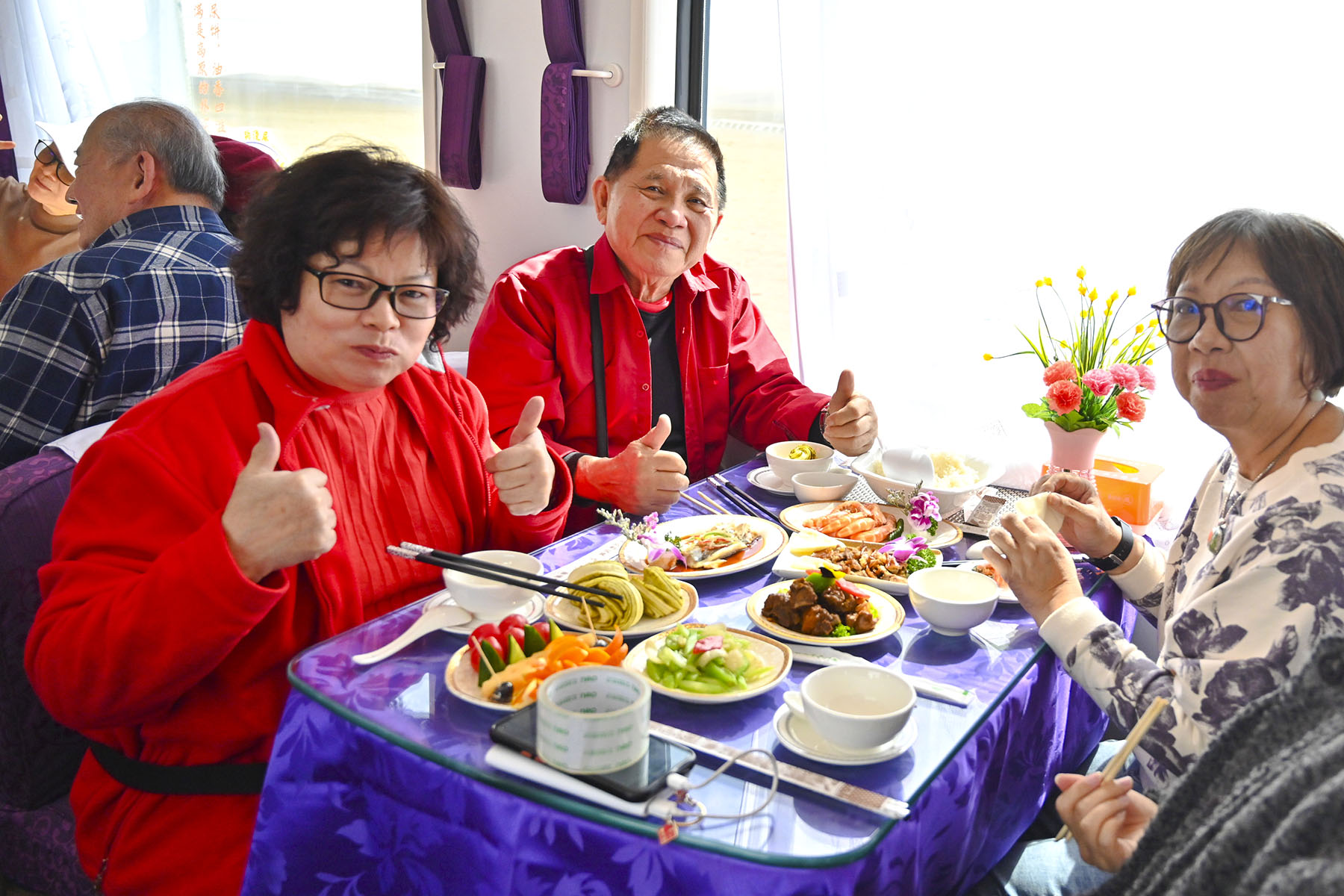
Rise of the 'silver economy'
The train services are part of China's strategy to grow the "silver economy"-turning the challenges of an aging society into economic opportunities.
China had more than 310 million people aged 60 and older at the end of last year, accounting for about 22 percent of the total population.
To meet rising demand from this sector, the government introduced a dedicated action plan in February to expand "silver-haired" train services. The plan, jointly issued by nine ministries including the Ministry of Commerce and China State Railway Group, highlights the significance of these trains in stimulating consumption, supporting growth and improving people's livelihoods.
"This is an initiative with a big impact," said Kong Dejun, director of the Department of Trade in Services and Commercial Services at the Ministry of Commerce.
He noted that such innovative tourism services have stimulated consumption.
With trains covering multiple destinations on one route and integrating food, lodging, sightseeing, shopping and entertainment along the way, they are particularly appealing to senior passengers, he added.
He also noted that the tourism industry can use such train services to encourage more people to travel, as some less-known sites along the route can be promoted to attract different types of tourists.
"Moreover, the increasing number of senior-friendly tourist trains can make better use of China's railway system," said Kong. "By matching the flexible schedules of older travelers, we can use the trains more efficiently during off-peak times, better meet the travel needs of seniors and help boost both investment and consumption."
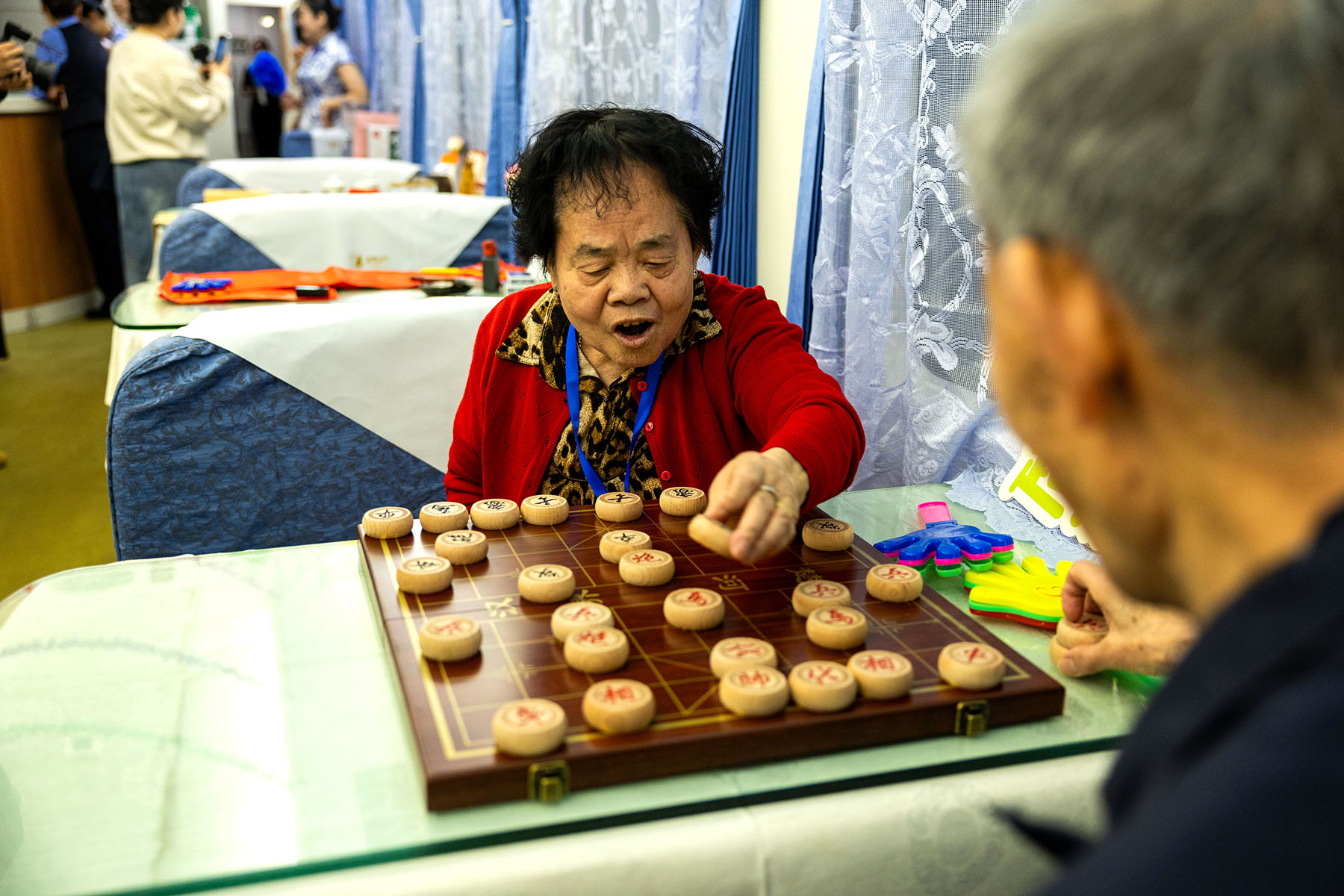
Service upgrades
China's rail network now stretches over 162,000 km-including 48,000 km of high-speed rail, the longest in the world. Over 4.08 billion passenger trips were made via the railway network last year in China, highlighting the potential growth opportunities of tourism trains.
"Tourism trains have been developing for over twenty years in China. In the past, they couldn't operate on a large scale because the existing rail lines didn't have enough capacity. But in recent years with the rapid growth of high-speed rail, the railway network has expanded greatly, making it much easier for tourist trains to operate on a larger, market-driven scale," said Zhu Wenzhong, an official with China State Railway Group.
"In recent years, we have seen a rapid development of the operation of tourism trains. The number of such trains reached a record high of 1,860 in 2024, nearly a 50 percent increase from 2019. Most passengers-about 80 percent-are seniors," he said.
Popular routes include Xinjiang, Yunnan and Heilongjiang, with about 1 million tourist trips last year, he noted.
"Seniors are becoming the major clients to ride tourist trains," he added.
To better serve elderly travelers, all trains use air-conditioned coaches and offer tailored services. Menus are designed with senior nutrition in mind, while medical personnel and common medications are also onboard. Larger seats, handrails, emergency call buttons and wheelchair-accessible layouts further ensure passenger safety and comfort.
Train activities include music, reading and chess, while health consultations, blood pressure checks and emergency care are also available.
"We offer healthy meals onboard, managing salt, sugar and oil intake. High-fiber and high-protein options ensure a balanced diet for passengers with conditions such as hypertension and diabetes," said Zhao Huaying, a business manager at China Railway Travel Group's tourism train division. "Dedicated medical support is also provided."
Each tourism train is staffed with medical personnel capable of handling common health emergencies such as cardiac events or injuries. Medical kits and emergency call buttons are installed for added safety, train conductor Zhang Wenquan said.
ALSO READ: Travel, business bloom from desert railway
"My husband and I are traveling far from home, and we feel so reassured with this level of care," said 78-year-old Feng Zhongmei from Nanchang, who traveled to Fujian on a tourist train.
In addition, the "silver-haired "tourism trains also welcome young people and family outings are also one of the major options.
Passengers can gain detailed information about specific tourism trains via the 12306 app, with departure times, prices and itineraries provided.
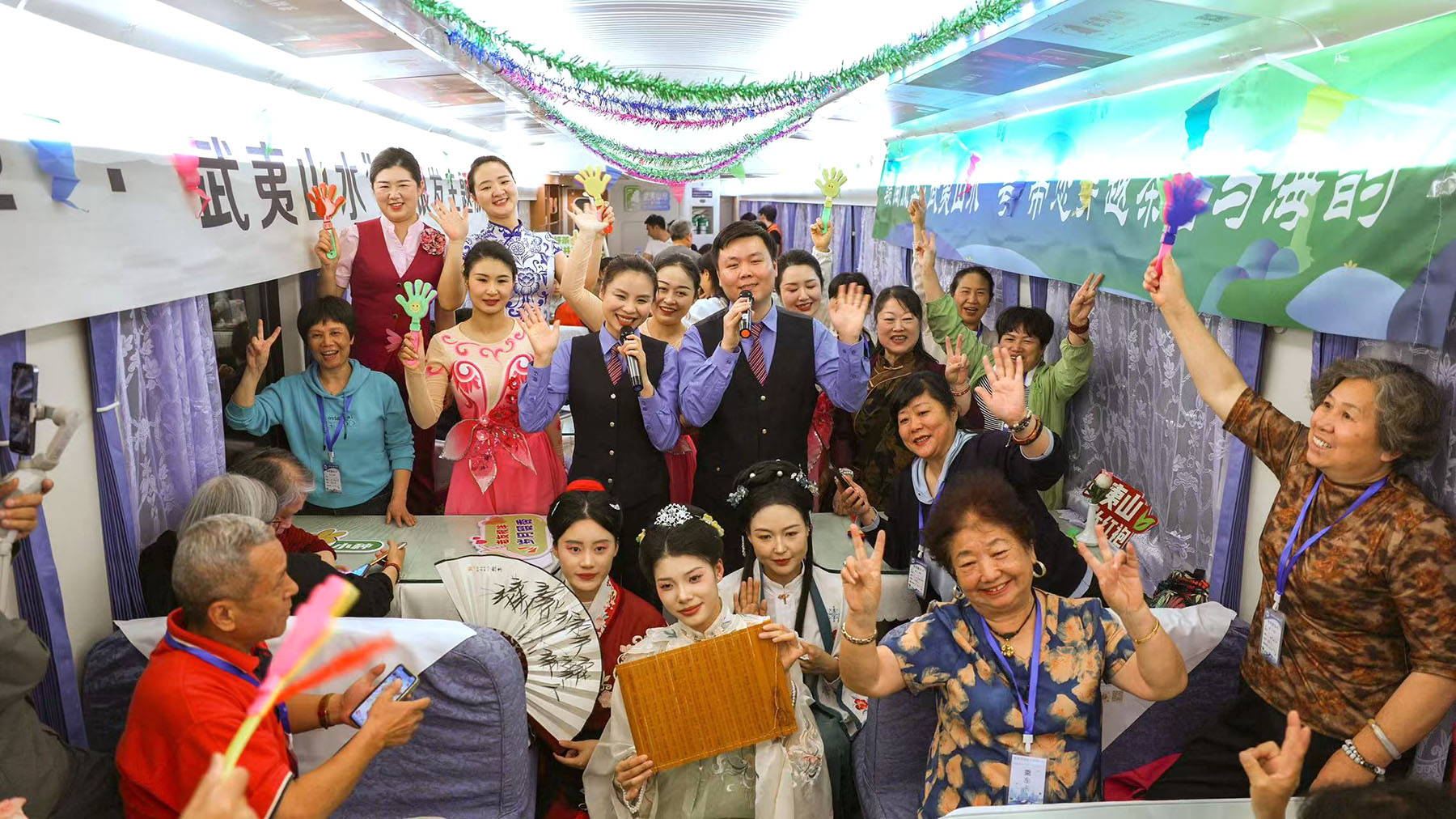
Promising future
China's railway operator has made a great effort to expand the service, which is undergoing a three-year development plan, with over 100 premium tourism routes and 160 elderly-friendly trains scheduled to be launched by 2027, with an annual operation of more than 2,500 tourist trains.
"Now that I'm retired, I can finally slow down and see the world," said a 61-year-old passenger surnamed Mu, a former university professor, enjoying his journey in the carriage.
luowangshu@chinadaily.com.cn


